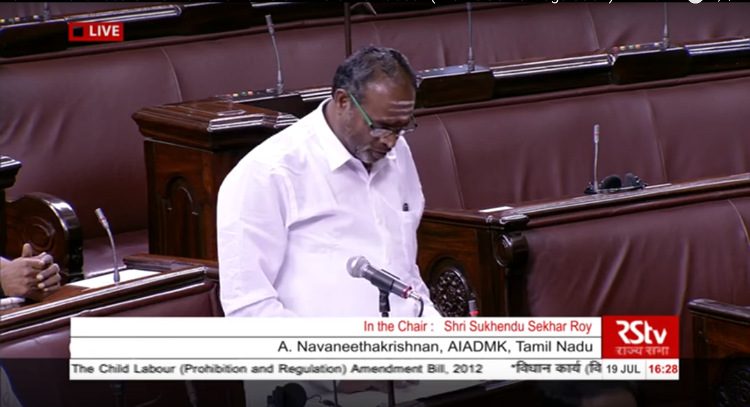No Child Labour In Tamil Nadu: AIADMK MP. He’s Wrong

“There is no child labour in Tamil Nadu due to the efforts of the honourable chief minister (J Jayalalitha),” said A. Navaneethakrishnan, member of parliament (MP) from the state’s ruling AIADMK, in the Rajya Sabha on July 19, 2016.
Sh. A. Navaneethakrishna’s remarks on The Child Labour (Prohibition & Regulation) Amnd. Bill, 2012: https://t.co/OQzpyxgoUC via
— Rajya Sabha TV (@rajyasabhatv) July 19, 2016
We fact-checked Navaneethakrishnan’s statement and found it to be untrue.
As many as 151,437 children aged between 5 and 14 years in Tamil Nadu were classified as “main workers" and 132,795 were classified as “marginal workers”, according to recently released Census 2011 data.
Main workers are employed for at least six months or more in a year; marginal workers less than six months.
Navaneethakrishnan’s speech, on the second day of the ongoing monsoon session of the Parliament, was part of the discussion on the Child Labour (Prohibition and Regulation) Amendment Bill, 2012, passed in the Rajya Sabha on the same day. The amended Child Labour Act prohibits the employment of children (below 14 years of age) in all occupations, except in “non-hazardous” family enterprises or the entertainment industry.
The Bill also allows children between 14 and 18 years of age to be employed in “non-hazardous occupations and processes”. The law has a new category of “adolescents”, those aged 14 to 18.
Child labour has reduced, but India has more children working than any other country
The data further reveal that 4.4 million children aged between 5 and 14 years were classified as main workers across India; 5.7 million were marginal workers.
At the time of the Census, 1.6 million children among marginal workers and 3.9 million among non-workers sought work across India.
The non-workers broadly constitute students who did not participate in any economic activity--paid or unpaid,--household duties, attending to daily household chores, such as cooking, cleaning utensils, looking after children and fetching water.
The prevalence of child labour in India dropped 60% over a decade (12.6 million in 2001 to 4.9 million in 2010) but is still the world’s highest, IndiaSpend reported in August 2013. India has 4.9 million working children—below the age of 14, according to the National Sample Survey Office.
Half of all children living on the street or from homeless families work for a living–at construction sites, hotels–and do not study, IndiaSpend reported in February 2016, based on surveys conducted across five Indian cities.
(Saha is a freelance journalist and MA Gender and Development candidate 2016-17 at Institute of Development Studies, University of Sussex.)


